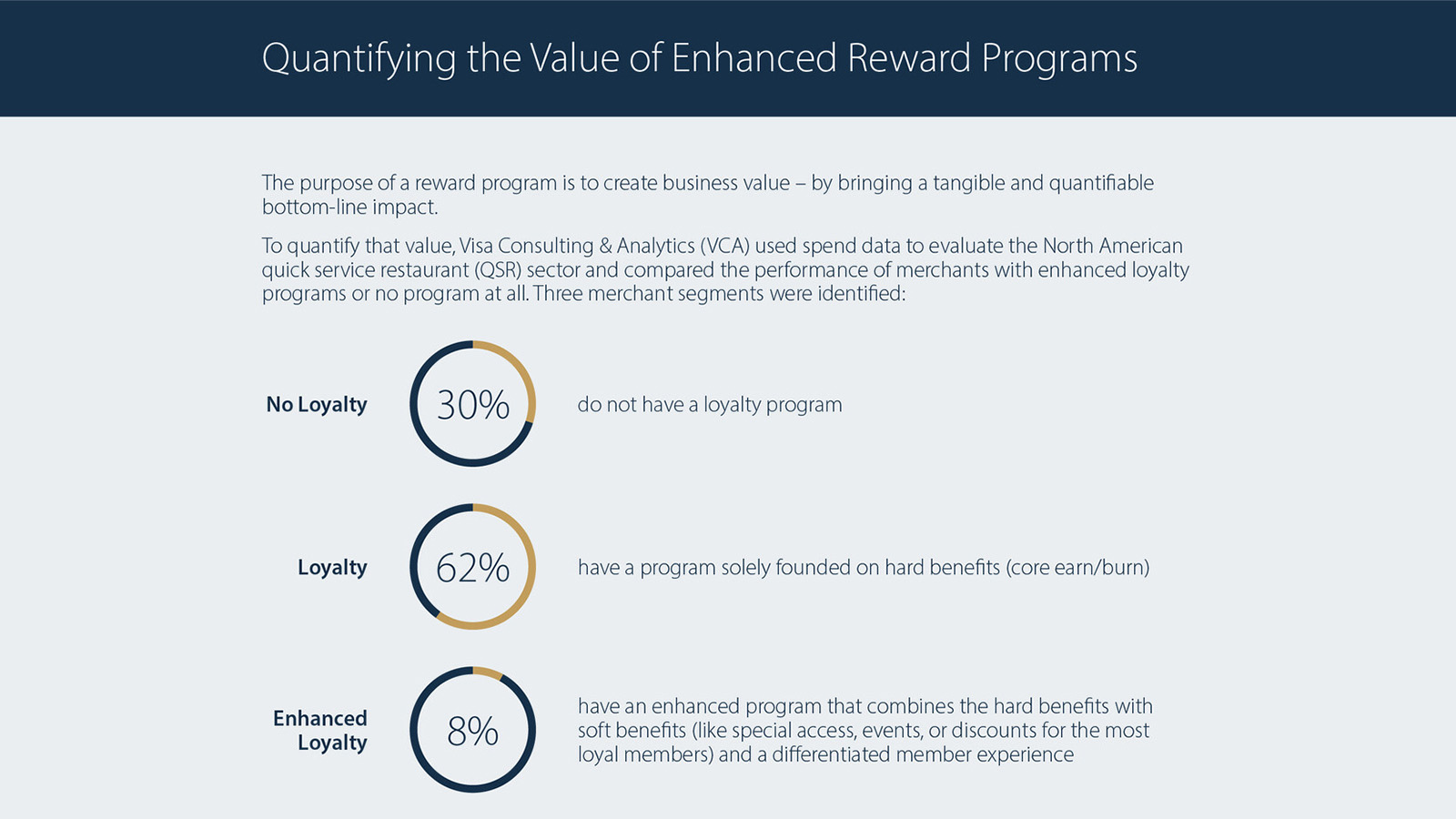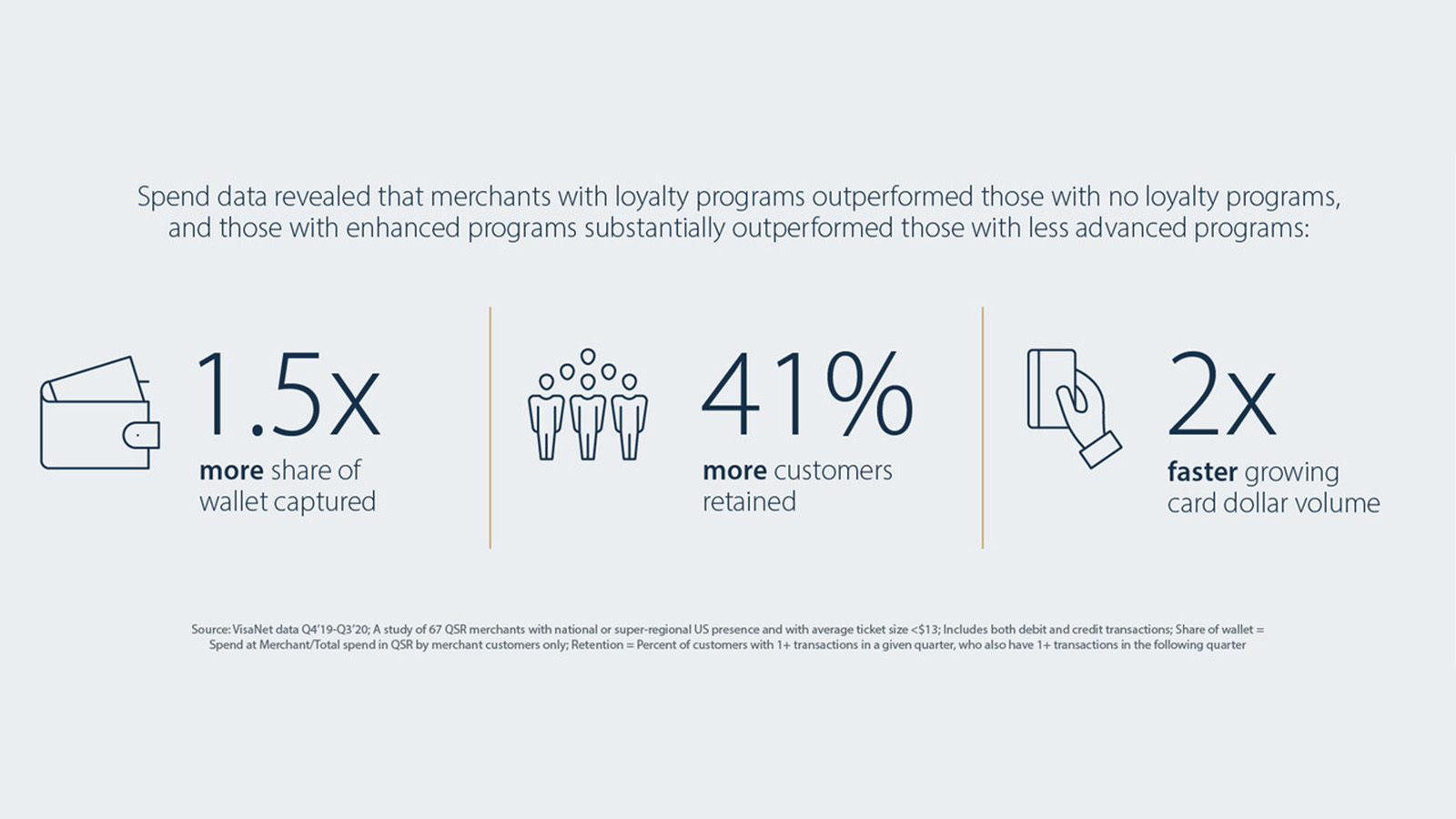

Over the past year, many of the staples of merchant loyalty and credit reward programs – like travel, concerts and eating out – came to an abrupt halt, and the brands behind them had to quickly pivot to give their customers alternative options.
This has led to more options for consumers and more competition vying for their attention and spend. As the restrictions of the pandemic continue to recede, what does this mean for the future of loyalty programs? What trends are emerging from forward-thinking brands? And how should financial institutions and merchants approach their loyalty programs going forward?
Despite the disruptions of the past year, three truths remain unchanged about loyalty programs:

More flexibility – in the way rewards can be earned
As with many other aspects of the payment business, the fintech community has brought fresh thinking to reward programs, especially on earning options. To secure higher levels of consumer engagement, as well as to lift and shift spend, there is an emerging fintech-led emphasis on customization and gamification. For example, with some programs, consumers can choose to apply a bonus to their preferred spend category each month such as with Bank of America’s Preferred Rewards program. With others, a higher-earn rate is automatically applied to the consumer’s top spend category, for example US Bank’s Business Leverage Visa Signature card.
Meanwhile, the pandemic precipitated some changes to the way many merchants run their programs. With a shortage of spend in their own sector, several travel brands enabled customers to earn rewards in adjacent categories. For example, Marriott, United Airlines and Southwest Airlines all introduced local dining programs, enabling customers to earn miles or points at local restaurants or takeaway food services.
In the coming months, we expect to see more flexibility and variety, as this type of re-imagining extends across the wider market.
More creativity – in devising rewards with a higher perceived value
Among forward-thinking players, there is increased focus on the type of rewards that are most likely to appeal to consumers post-pandemic, combined with creativity on how offers should be constructed and marketed.
For example, as restrictions on mobility continue to ease, travel is likely to see a big bounce-back and the perceived value of travel rewards may even be higher than before. Anticipating a well of pent-up demand, several leading financial institutions are investing heavily in travel-related reward programs – one example being Capital One with the opening of its first ever airport lounge.
Another area that is gaining traction is crypto rewards, with consumers intrigued by the idea of spending in fiat currency and earning rewards in cryptocurrency. This presents a low-risk, low-commitment opportunity to earn a stake in a new asset class, and one that could potentially appreciate rapidly. As further evidence of the trend, Visa is working closely with several licensed and regulated platforms – such as BlockFi, Coinbase and Fold – to provide a bridge between these digital currencies and the global network of merchants that accept Visa payments.
More diversity – in where and how rewards can be redeemed
Reward redemption is perhaps the area with the highest incidence of pandemic-induced enthusiasm, the one with the most untapped potential for further innovation and differentiation.
For issuer-led programs, the scarcity of travel during the pandemic accelerated the idea of more flexible redemption. As a result, financial institutions have been looking for ways to engage with consumers on redemption, partly to keep their reward programs vital, and partly to avoid the liability of a large build-up of unredeemed points. We have seen a surge of campaigns focused on local benefits, food delivery, incentives for shopping online, and media streaming services. Meanwhile, alternative redemption options have included receiving cash back, points transferring, offering gift cards, and giving the option to offset points against everyday spend items.
For merchant programs, we see more brands enabling customers to convert their points into stored value. A trailblazer in this category is Uber which, with its Rides app, enables customers to earn Uber Cash at various point thresholds.
As this trend evolves, we expect to see more innovation. For example, in issuer-led programs we sense clear consumer demand for the additional value that can be delivered from merchant-funded offers. We also anticipate that cardholders will be able unlock more benefits in return for higher spend – in areas such as carbon offsets for example, or in-game credits for purchasers.
An exhilarating time to work in the reward program business – and a time to get more serious about its ROI
The loyalty market has always been dynamic, but the pandemic unleashed a new wave of innovation. As a result, there is more choice for consumers and, inevitably, an expectation for more relevant programs with real-time capabilities, that deliver the right offers, at the right time, through the right channel.
Now is also a good time for loyalty program managers to review their current programs and how they may need to evolve to compete with these new trends emerging. In an increasingly competitive environment, it is vital to get a clear understanding of how your program is performing. We take the view that customer loyalty can be quantified using spend data, and we believe that the two truest measures of it are:
- Share of wallet – a customer’s spend with you divided by their total spend in your category. This can be analyzed for a specific point in time and for change over time.
- Customer retention – the percentage of your customers who have spent with you in the past, who continue to spend actively in your category, and who continue to spend actively with you.
These two metrics should be measured routinely, both for members and non-members of your loyalty program. They should also be analyzed across your customer base overall, for each of your core customer segments, across all customer lifecycle stages, and for those members who redeem and those who do not.
This type of analysis is crucial. As well as quantifying a program’s past performance, it enables you to establish a set of targets going forward; it indicates whether your program needs significant change, a light refresh, or something in between; and it allows you to understand who your program currently appeals to, identify the gaps and the opportunities.
Financial institutions and merchants that want to compete in today’s new loyalty environment should look at evolving their current programs to take account of these emerging trends and stay ahead of consumer behavior shifts. As well as finding more imaginative ways to capture share of wallet, they should ensure that they have a methodology to accurately measure their performance and evaluate their ROI.

